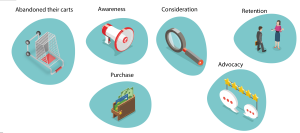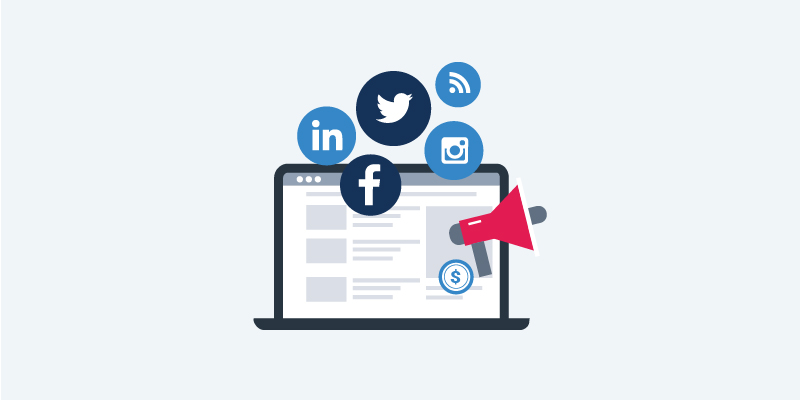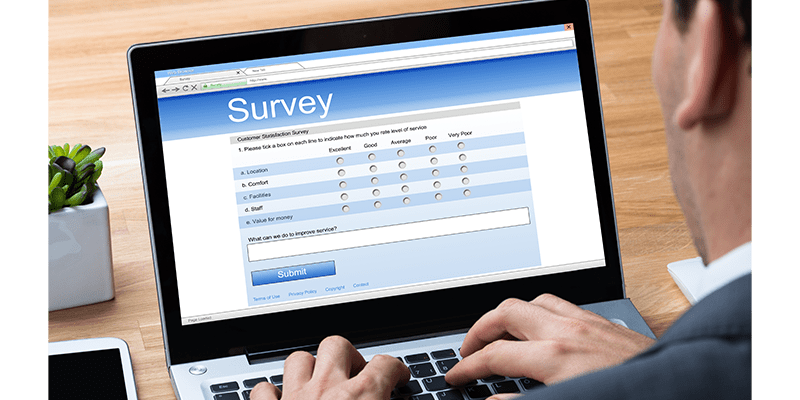Marketing
What are the 5 Stages of the Customer Journey?
by Alice Gleeson

Did you know nearly 70% of online shoppers abandoned their carts in 2021?
Let’s take a closer look at why this may be. To do this, we’re going to need to look at the different stages of a customer journey. The customer journey is the path your customers take from becoming aware of your brand to purchasing your product or service and to finally promoting the brand on your behalf.
Understanding your specific customer journey is crucial for the success of your business as once you understand your customer journey problems, you can position your brand in a way that will help overcome them.
Customer journey models can be customized to reflect different user personas of customers of different types of products and services for each industry. However, there are five stages of the customer journey.
The 5 stages of a customer journey
Awareness
In the awareness stage of the customer journey model, your prospect has discovered a need or want. Once they define what this is, they will do their research to try and uncover a solution to their problem. Customer awareness is very important in this stage as you want your brand to be front and center in the minds of the prospect, while they evaluate the different brands that can help them solve their problem.
Before you begin to boost awareness of your brand, you will need to determine who your customers are and how you are going to reach them. Once you know who your target market is, you can interact with them through advertising initiatives such as PPC.
You may also reach out to your customers through social media and through word-of-mouth marketing.
Consideration
Once a prospect has decided what they need, they will then consider whether to purchase from you. Although advertising and social media do work wonders, they can be often overlooked as mainstream advertising. Instead, consumers tend often put their trust in others. Testimonials and friends’ and families’ words and opinions become very important in this stage.
How many times have you stopped by a coffee shop because you heard it was good from a friend? Can you count on one hand how many times you visited a restaurant for lunch because it was recommended to you by a loved one? A great way of promoting your brand and becoming a prominent feature in the consideration stage is featuring testimonials and reviews from your current customers on your various channels. In this stage, you want your customers to consider your brand over your competitors.
Purchase
This is often the ‘pin drop’ stage as it is where the consumer makes their decision and purchase. They have finished comparing your brand to your competition and they are now ready to make their purchase. Be aware that this is the stage where many people abandon their shopping cart so to reduce the chance of your customers doing this with your brand, it can be helpful to be as transparent as possible with costs, whether this is shipping costs or customs charges.
Retention
Once a customer has purchased from you, they will want to have the option to interact with you if they require additional advice or support. How you maintain this level of additional guidance to ensure it is easily accessible post-purchase is what will matter most to the consumer. This is where brand loyalty is formed.
Having a helpful support team, showcasing a contact us number and email address on your company’s website, or having a live chat are some of the options you may implement to ensure your brand is as helpful as your consumer needs it to be.
By doing so, you may be able to successfully retain your customers, leading to repeat purchases, customer loyalty, and long-term relationships. According to Thinkimpact, repeat customers not only spend an average of 67% more than new customers but it will also cost you 5 to 25 more times to acquire a new customer than to retain an existing one.
Advocacy
In the final stage of the customer journey model, your customers are going to spread the word about their experience with your brand, whether it’s a positive or negative experience. If it is a negative experience, you need to be able to assess the situation and proceed with caution. For example, if a customer tweets about their experience with you, is your social media team prepared to reach out to the consumer, assess the situation and provide a solution to resolve their issue in a timely manner? It’s also important to reward those who showcase their positive experiences with your brand. Could you offer them a small token to show your appreciation to them, such as a rewards program? For your customers to turn into advocates of your brand, you need to make it easy for them to recommend you to others.
Overall, all customers want to have a seamlessly enjoyable experience with your brand, and personalizing their customer journey will really tailor to their individual needs. Regardless of which customer journey model you look at, your starting stage will always be the same. As customers are more likely to seek out reviews from their friends and families, it’s important to have a good brand reputation. Adding testimonials to your website and receiving positive feedback on third-party review platforms are great ways to increase your customer advocacy.
Want to develop your own customer journey? Reach out to us today!







